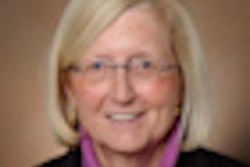Nearly three-fourths of radiology residents moonlight -- that is, they take on extra work in addition to their regular duties, according to a new study published in the April issue of Academic Radiology. The practice may be understandable because the process of becoming a physician is so expensive, but is it safe for patients?
In September 2010, the Accreditation Council for Graduate Medical Education (ACGME) released new standards for trainee work duty hours, counting hours spent on internal and external moonlighting toward an 80-hour maximum weekly work limit. ACGME also mandated that intermediate-level residents have at least eight hours between work periods. But how can these restrictions be monitored when residents are working outside of their training institution?
"External moonlighting ... introduces some uncertainty regarding the adequacy of attending supervision with regards to clinical responsibilities and compliance with ACGME-mandated work restrictions," lead author Dr. Michael McNeeley and colleagues wrote.
For the study, McNeeley's team distributed an anonymous electronic survey in October 2012 to all resident members of the Association of University Radiologists (AUR); 173 distinct U.S. training programs were represented among the members contacted. The researchers gathered responses for six weeks, receiving 87 viable responses from 61 institutions (Acad Radiol, April 2014, Vol. 21:4, pp. 546-553).
Of the 61 institutions represented, 44 (72%) said their residents practice moonlighting, with internal opportunities being more prevalent. Three respondents (7%) stated that residents "probably do" or "definitely do" violate duty-hour restrictions while moonlighting, and that these violations weren't documented; 34 respondents (77%) indicated that residents "probably do not" or "definitely do not" violate duty-hour restrictions.
What are residents doing?
Among the 44 respondents from programs where moonlighting is practiced, 39% stated that residents provide coverage for contrast injections only when moonlighting within their institution, while another 39% said this service is not provided at all. Four programs (9%) provide contrast coverage only for external moonlighting, while six programs (14%) provide it for both internal and external moonlighting.
As for interpretation of diagnostic images, McNeeley and colleagues obtained the following responses:
- 32% provide image interpretation only when moonlighting internally.
- 32% interpret diagnostic images only when moonlighting externally.
- 14% interpret images in both situations.
- 23% of survey respondents do not interpret diagnostic images while moonlighting.
Of the residents working at outside institutions, 29% provide final interpretations without further attending review, the researchers found. This suggests that the scope of clinical responsibility depends heavily upon whether the work is performed while moonlighting internally versus externally.
"Residents who moonlight externally are significantly more likely to provide final interpretations of diagnostic imaging than those who moonlight internally, and, although an uncommon practice overall, the performance of unsupervised invasive procedures appears to occur exclusively as an external moonlighting activity," the team wrote.
Finally, the researchers found that the majority of moonlighting residents (84%) do not perform invasive procedures.
Is it safe?
The study did not tackle the medicolegal, ethical, and financial implications of unsupervised trainee practice. However, it would seem that residents' extracurricular work would be best performed under the guidance of their institution's program director or department chair to minimize the risk of detrimental patient care, according to McNeeley and colleagues.
"Radiology trainees and their departmental advocates can identify means of acquiring additional income and clinical experience that do not compromise administrative oversight or quality of patient care," they concluded.
In an editorial also published in the April issue (pp. 429-430), Dr. Eric England, of the University of Cincinnati Medical Center, and colleagues expressed concern about how moonlighting affects a resident's education -- and well-being.
"One can surmise that moonlighting may be associated with increased physical and emotional stress, especially for the nearly one in five residents who spend up to 20 hours per week away from their families to moonlight," England and colleagues wrote. "In addition, sacrificing time that could be spent studying radiology to moonlight may hinder a resident's education."
Moonlighting could also interfere with call and overnight rotations, and if conflicts occur, residents might try to cover both shifts at the same time, according to England's group. What if a resident is covering studies from an outside hospital while on call or while covering contrast at a remote facility associated with his or her institution? Both scenarios could overextend a resident and negatively affect patient care.
Although some residency programs have strict requirements that residents must meet before they start moonlighting, this is the exception rather than the rule, they wrote.
"Many program directors and department chairs will simply sign a sheet of paper when the resident completes a certain level of his or her training, allowing that resident to moonlight and trusting that the resident will work and act in a responsible way," they concluded. "As both mentors and instructors to residents, it is our primary responsibility to ensure the highest level of patient care and educational experience for our residents. By allowing resident moonlighting, are we realizing this high standard?"




















